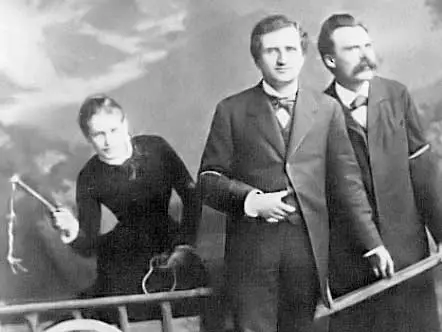Three kinds of thought experiments in philosophy


Three kinds of thought experiments in philosophy
Thought experiments are quite common in philosophy, but they are also quite problematic. Some thought experiments are meant to be taken almost literally (as in the case of Hobbes’s state of nature), while other are meant to lead the reader to a ‘logical’ conclusion based on a number of propositions (as in the case of Searle’s Chinese Room). Whatever the intention of the philosophers may be, it is important to establish what kinds of thought experiments there are, unless we fall prey to the common misconception that they are entirely nonsensical. Understanding the kinds of thought experiments would hopefully help with understanding the role they play in particular philosopher’s work. The general disagreement regarding thought experiments is that they are simply not empirically verifiable.1 As I will show below, not all thought experiments require verification.
There are in general terms three kinds of thought experiments:
First, there are thought experiments that rely on sound theories without any intention of experiments. If the theory is sound, then the conclusion would follow. Good examples of such thought experiments are abundant in physics, where a physicist did not need to do the actual experiment; doing the thought experiment sufficed. Most of us are familiar with Einstein’s thought experiment regarding relativity.2 Others may remember that Einstein did not need proof of light bending through photographs by Eddington in 1919, famously saying that were the proof to fail, “The theory is correct anyway”. Such thought experiments are also possible in philosophy, of course, though they usually yield less fascinating pictures. The point here is rather simple. The first kind of thought experiments can be replicated as actual experiments. There is not always a need for verification of the thought experiment, but one could certainly do the experiment. In physics this is perhaps easier (to a degree) than in philosophy, but the point remains that as long as the theory is sound, verification is possible though not necessary.
Other thought experiments rely on sound theoretical framework, but are impossible to replicate. They are conceivable in thought, but they are impossible as an actual experiment (yet).3 This type of thought experiments require a level of concreteness that can be backed up by data, without the experiment itself being replicable. I have mentioned Searle’s Chinese Room4 before, which falls under this category – while it is practically impossible to fill a room with all the possible objects, the thought experiment has a sound theoretical framework that allows for a conclusion to be drawn. So in short, the second kind of thought experiments cannot be replicated as actual experiments and thus cannot be verified, but are nonetheless sensible. In physics, we cannot build a model universe, but a lot of our theories derive from a particular theoretical understanding of the universe; and in case of philosophy there are, for instance, ethical problems which do not allow for actual experimentation (the infamous trolley problem comes to mind).
The third kind of thought experiments is why thought experiments have such a bad reputation. They lack the theoretical framework and are (rather obviously) not replicable. If taken literally, they are quite absurd: one is asked to picture some ridiculous scenario (surreal even for Hollywood standards) and to apply our common sense in trying to envisage how we would feel about such a case – i.e. to draw conclusions from that scenario, based on our intuitions that are reliant on the lack of absurdity. We can discern two features from this kind of thought experiments:
- The hypothesis relies on a situation which is beyond the sense data (sidenote: I don’t really like this notion of sense data, but it will do) – it is almost impossible to imagine such a situation without giving ourselves inhuman capabilities.
- The conclusion drawn relies on our common sense or intuition of the impossible.
The problem, as one can imagine, is precisely in the ability to draw an intuitive conclusion on the basis of impossible situations – that is, the lack of sense data is meant to somehow lead to a sensible conclusion. To put this differently, the premise upon which the thought experiment is based (no senses) is contradictory to the type of conclusion that is sought (intuition or common sense). Is it surprising that such thought experiments are difficult to grasp, especially if taken in isolation from the particular text or philosopher in question?5
This brief schema of two features is surpassingly telling of the structure of the thought experiments. While the scenario is grandiose and unimaginable, the conclusion is obvious (and often dull).6 The problem with this kind of thought experiments is precisely the obtuse conclusions that are drawn. Of themselves, the unimaginable situations are quite fascinating and make for great insights longer down the line. The jumping to conclusions prematurely make for a very bad philosophical work, which not only lead to absurdities, but also detract serious philosophical work (and funding is misplaced, discipline shamed, etc.).
In conclusion, in identifying thought experiments, one should ask to what extent the two features are present. Are the premises within the scope of actual experimentation? If not, are the conclusions drawn reliant on the premises? If the latter is a ‘no’ as well, the thought experiment is in all likelihood nonsense intended to persuade you in favour of a particular position.
Sign up for Paradox of the Day mailing list and please visit our Patreon support page.
- This is a really silly objection, not the least of the reasons why is that the ‘empiricists’ usually bring up Popper and falsifiability into the debate, completely ignoring that Popper was trying to overcome simplistic verificationism.
- And if we are not, here are a couple set out by The Smoot Group, part of Lawrence Berkeley National Laboratory.
- One of the most fascinating thought experiments that we are eagerly trying to do an actual experiment on, is referred to as Molyneux’s problem. In brief, in a letter to John Locke, William Molyneux asked whether a man born blind, but able to distinguish and name between a globe and a cube by touching them, would also be able to do so by seeing them were his eyesight to be restored.
- If you are unfamiliar, have a look at SEP; get the book from Amazon.
- Sam Harris’ thought experiments usually fall into this category, but more on that some other time.
- Another good tell-tale sign is that it appears in science-fiction more often than in philosophy – and yet, the sci-fi people have really different and not so obvious and dull conclusions.







A worthy effort, trying to work out a taxonomy of “thought
experiments” to get a sense of when they should be useful.
I’m a bit at a loss as to why Searle’s “Chinese Room” falls into
category 2 and not category 3… to me it seems like a mess of
dubious assumptions that just exhibit confusion on Searle’s part.
I’ve been thinking a bit lately about how useless the popular
“fat man and trolley” scenario is… it requires you make all
sorts of assumptions, some of which seem implausible and even
a-physical (a trolley heavy enough to do damage isn’t going to be
stopped by a single human body, no matter how fat), combined with
weird overtones (it raises unintended issues like “is there some
anti-fat person prejudice at play here?”). It makes one wonder
why they bothered sketching out this scenario, rather than just
keeping it abstract (“is it okay to kill one innocent if it’ll save
more than that?”).
The Chinese Room is messy, I grant you that, but the conclusion drawn is not out of touch with the premises. The core of category 3 is that there are 2 features, but the connection between the 2 features is unsubstantiated. This is not the case with Searle’s Chinese Room, though I would like to hear if you think that is the case, how so?
As to your second point, the popularity of the trolley problem bothers me. It’s one of the most overdone thought experiments, and the simplification is to such a degree that the conclusions drawn can be somewhat ridiculous (depending on the version). I am not sure whether the fat man scenario was academic, or just some internet trolling against fat people (honestly don’t care much either). But why I do not dismiss the trolley problem out of hand is because it is not really falling into category 3 – why? because it is a thought experiment that of itself does not demand a particular conclusion. It demands the reader to think/question their moral compass, it presents the difficulties of consequentialist and deontological ethics, but it does not claim a right conclusion.
The thing with the Chinese Room is that it’s actually not clear that it could be set-up at all– translation software exists, but it’s not up at Turing Test levels of quality, so that’s one premise, that we can write the software, then there’s some slight of hand about running the algorithm without a computer, just using some bureaucratic paper shuffling, and that’s another assumption, because it’s entirely likely that the algorithm would be too messy for that (e.g. if it takes a week to get the answer, you flop the Turing test). Though far worse is the level of confusion the idea shows about whole systems and components… the question is not whether the guy-in-the-room knows what’s going on, the question is whether the external behavior of the whole system registers as “intelligent”. Brains may be the seat of consciousness, but every neuron need not be conscious for that to be so.
I think you’re raising a different issue concerning the fat man/trolley scenario being a matter of ethical reasoning… the point I was making is that there’s a huge disconnect between it and reality. If something like it really came up, the right answer would be “scream your head off”, to try to get the silly people up ahead to step off the tracks. But that’s one of many things you’re supposed to assume is ineffective by the statement of the problem. And you’re supposed to assume you *know* the people won’t get off the tracks in time, or that the trolley will stop, and you’re supposed to have detailed knowledge of the funky physics by which the death of the fat man will stop the trolley, and so on… The number of odd suppositions pile up to the point where I wonder why anyone finds it interesting to think about it.